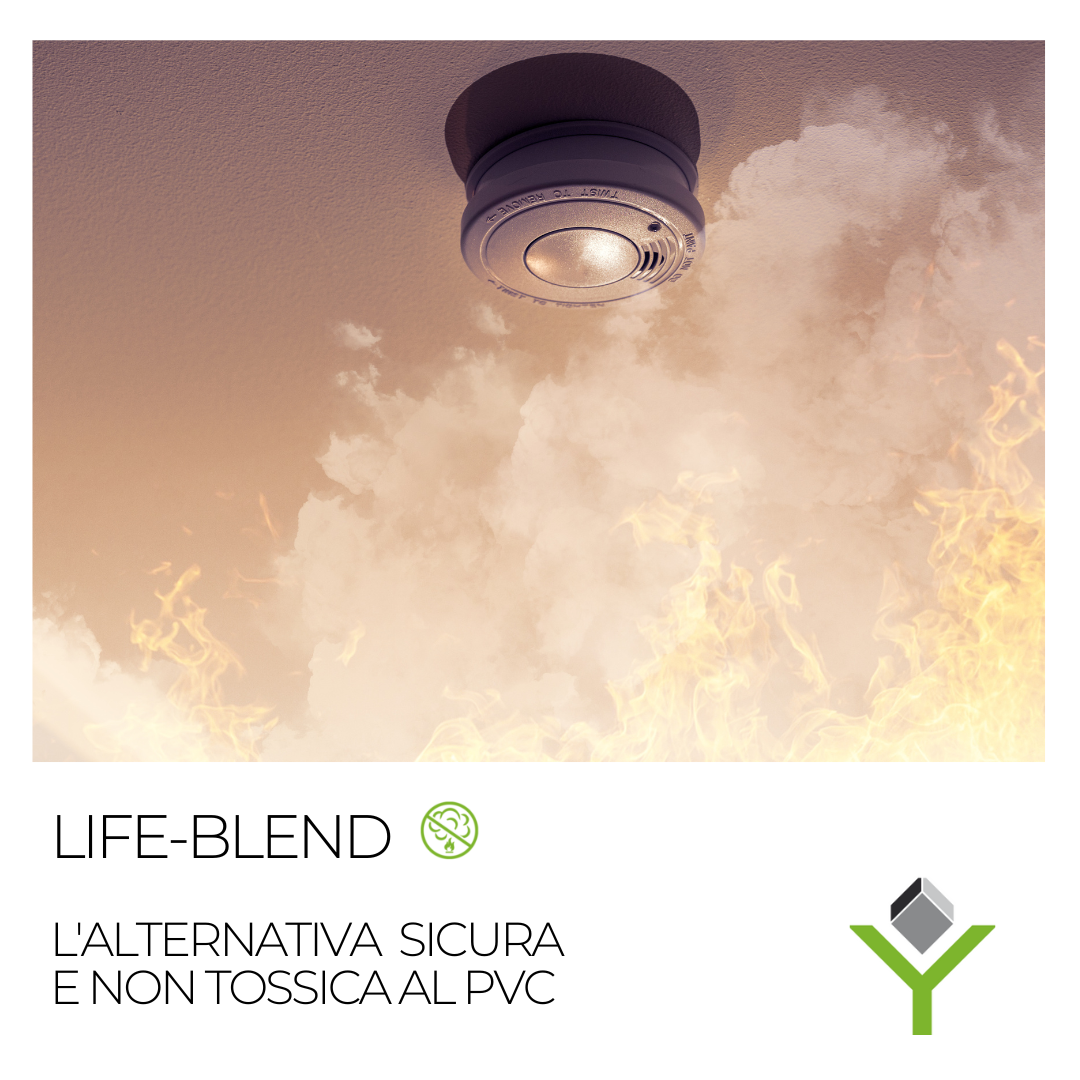
Protect yourself and the environment: choose wall protections made with LIFE-BLEND®, a safe and non-toxic alternative to PVC
Combustion of any plastic material results in smoke emissions, PVC is no exception.
PVC, or polyvinyl chloride, is a common type of polymer used in a wide range of products including pipes, furnitures and wall protections. When these products are burned, they release a variety of toxic substances into the air, including dioxins, furans and hydrochloric acid.
Hydrochloric acid and hydrogen sulfide emitted during PVC combustion can cause damage to lungs and respiratory tracts, while dioxins are particularly dangerous, as they are carcinogenic and can cause damage to immune system, reproduction and nervous system. Furthermore, these toxic substances can remain in the environment for a long time and accumulate in animals and human tissues, increasing the risk of long-term exposure.
To limit the emissions of these dangerous substances is important to minimize the use of PVC products and to choose alternative materials that are safer for the environment.
In Styla we do not use PVC for our wall protections, instead we have chosen to develop an innovative material, “LIFE-BLEND®”, composed of a blend of polycarbonate and other non-toxic polymers.
LIFE-BLEND® is particularly suitable for wall protections, as it offers the highest possible fire resistance for a plastic material and greater safety for people in case of fire: LIFE-BLEND® can be used in areas with a high risk of fire, such as public buildings and critical infrastructure.
LIFE-BLEND® is an extremely safe and fire-resistant material, with superior fire-fighting properties over standard PVC, making it an ideal choice for wall cladding and other applications where preventing the spread of flames and ensuring people’s safety is important.

Questo articolo è disponibile anche in:
![]() Italiano
Italiano


